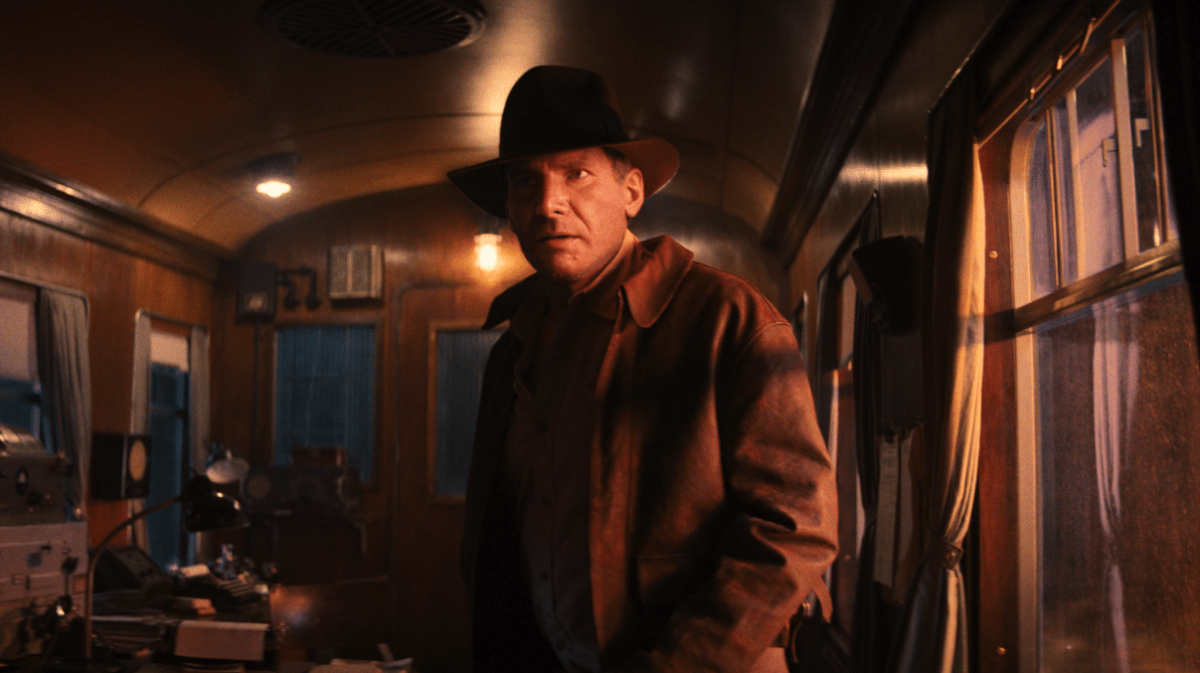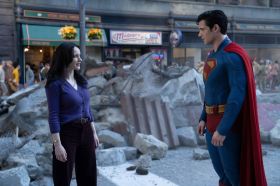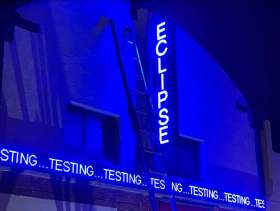By Ben McCann, University of Adelaide
Saddle up, don the fedora and crack that whip: Harrison Ford is back as the intrepid archaeologist in Indiana Jones and the Dial of Destiny. The film premiered at Cannes, where Ford was awarded an Honorary Palme d’Or in recognition of his life’s work.
Reviews for the fifth film in the franchise have been mixed, and it is the first Indy film not to be directed by Steven Spielberg (this time, it’s James Mangold, best known for his motor-racing drama Ford v Ferrari).
But this is ‘event’ cinema that combines nostalgia, old-school special effects and John Williams’ iconic score.
So, Ford is back, aged 80. What draws actors back after all this time?
Role returns
Ford first played Indy in 1981 and last played him in 2008. That is a full 15 years since the most recent film in the series, and 42 years since his first outing in Raiders of the Lost Ark.
Read: Indiana Jones and the Dial of Destiny review: a whip-smart success
Ford has form in returning to celebrated characters. One of the great pleasures of watching The Force Awakens back in 2015 was seeing Ford play Han Solo again for the first time in over 30 years.
Actors return to roles for numerous reasons:
- financial (Ford was reportedly paid US$25 million for Dial of Destiny)
- protection of their brand, image and star persona (Michael Keaton returning to play Batman after three decades and three other actors who have embodied the role)
- professional (Tom Cruise admitted over the 36 years between Top Gun films he wanted to make sure the sequel could live up to the original)
- personal (once-huge stars are working less and less, and only feel the need to return to a built-in fan base every few years – Bill Murray in the 2021 Ghostbusters sequel springs to mind).
It’s not always a successful endeavour.
Arnold Schwarzenegger and Sylvester Stallone – two of the biggest action stars of the 1980s off the back of iconic roles as The Terminator, Rocky Balboa and John Rambo – have repeatedly returned to those roles, and critics have been particularly harsh.
It did not work for Sigourney Weaver in Alien: Resurrection in 1997, 18 years after her first time as Ripley; nor for Keanu Reeves in The Matrix Resurrections in 2021, 23 years after the original.
Read: What to watch in July: new to streaming, cinemas and film festivals near you
And still, I’m intrigued to see what Michael Mann could do with his long-rumoured sequel to Heat, his definitive 1995 crime film. Ever since Mann published his novel Heat 2 last year – a kind of origin story for Heat’s key protagonists – fans have been hoping a de-aged Al Pacino (now aged 83) might return as LA cop Vincent Hanna.
Undoing time
‘Digital de-ageing’ first entered the Hollywood mainstream in 2019 with The Irishman and Captain Marvel.
Via this process, older actors (Robert De Niro, Al Pacino and Samuel L. Jackson have all been subject to the technology) move back and forwards in time without younger actors having to play them.
Films still tend to cast two actors to play older and younger versions of the same character, a choice that dates back at least to 1974’s The Godfather Part II, in which a young Robert de Niro plays Vito Corleone, portrayed by the much older Marlon Brando in the first film.
In 1989, Indiana Jones and the Last Crusade features a delightful opening scene where River Phoenix plays the young version of Indiana Jones, before Ford takes over for the rest of the film.
Actors used to just play characters of their own age when reprising earlier roles. Paul Newman finally won a Best Actor Oscar for his role as ‘Fast Eddie’ Felson in The Color of Money (1986), a quarter of a century after first playing him in The Hustler.
The sequel plays on Newman’s age, and his role as a mentor to an upcoming Tom Cruise, and bathes viewers in nostalgia and memories of a younger Newman.
But actors no longer have to exclusively play their age.
The first part of Dial of Destiny is an extended flashback, set in 1944, in which Ford has been digitally de-aged to appear in his 40s. This process used an AI system that scanned used and unused reels of footage of Ford from the first three Indy films to match his present-day performance.
Here, it is as if we are getting two Fords for the price of one: the ‘younger’, fitter Indy and the older, more world-weary version. It makes for a powerfully emotional connection on screen.
Yet there are some pitfalls to de-ageing. Some viewers complain that the whole process is distracting and that the hyper-real visual look of de-aged scenes resembles a video game.
Even so, de-ageing in Hollywood cinema is here to stay. Tom Hanks’s next film is using AI-based generative technology to digitally de-age him.
Given its reduced cost, speed and reduced human input, AI-driven innovation might have industry-changing ramifications.
The star of Ford
Harrison Ford remains a bona fide ‘movie star’ in an industry profoundly buffeted by Covid, the rise of streaming platforms, the demise of the monoculture, and the changing nature of who constitutes a star.
In the midst of all this industry uncertainty, it seems there is no longer a statute of limitations on actors returning to much-loved characters.
The next big ethical issue for the film industry as it further embraces AI is whether to resurrect deceased actors and cast them in new movies.
Still, I’m looking forward to seeing more actors de-aged as the technology improves and audiences acclimatise to watching older actors ‘playing’ younger versions of themselves. We are only at the start of Hollywood’s next big adventure.
Ben McCann, Associate Professor of French Studies, University of Adelaide
This article is republished from The Conversation under a Creative Commons license. Read the original article.





